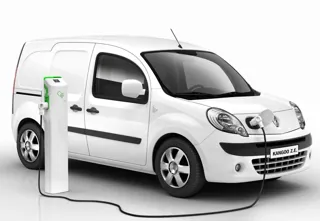British manufacturer CGON is targeting outright purchase commercial vehicle and taxi fleets with its latest generation hydrogen additive product.
The company was given a round of funding by Simon Johnson two years ago but he took on the position of chief executive seven months ago to steer the business to new growth.
He invested £750,000 in product development to launch the third generation of CGON’s ezero additive box.
Ezero1 has been independently tested on the road by testing company Emissions Analytics with a Portable Emissions Measurement System (PEMS).
For the urban drive cycle, the PEMS testing has shown reductions of 91.3% in PN (particulate number, or soot) plus a 47.9% reduction in NOx and a 50.6% reduction in NO2. CGON’s customer feedback with ezero’s on the road has shown fuel savings of up to 20% and it will be performing independent testing to confirm these figures in the next few months.
Johnson said: “The fuel efficiency improvements can vary due to the size of the engine and vehicle type. Our Nissan Qashqai test mule has shown 12.5% improvements in fuel economy but other customers have given us feedback that it has gone as high as 20%.”
Johnson said CGON hasn’t officially approached the the fleet market with the ezero product yet, but it has had approaches from interested parties.
He said: “I see our main fleet customers being outright purchase commercial vehicle fleets, LCVs and rigids, as well as taxi fleets that do a lot of mileage and want to see fuel economy improvements.”
Johnson said CGON has been approached by emergency service vehicle fleets that are seeking help with DPF problems due to vehicles being idle for too long.
The cost per box, including VAT and fitting is £459. The ezero needs filling up with CGON’s electrolyte solution for £5 around every 6,000 miles and these can be provided by the approved MoT stations that are being appointed to fit the devices. A light on the fob in the vehicle will indicate when a top-up is needed.
The box can be fitted in under an hour and works by introducing small amounts of pure hydrogen where it combines with the fuel-air mixture.
The mix results in what CGON calls a “complete combustion cycle” which means almost all waste gases are eliminated, emissions are reduced and engine efficiency is increased. The technology means around 95% of diesel particulate matter is vaporised during the burn.
CGON is currently running some free trials with fleet customers that want to test out the technology.
John Pryor, chairman of fleet representative body ACFO, said: “From experience in the past fleets tend to stay away from fuel additives and the results have been questioned.
“Also I doubt fleets would be able to claim any of these saving on their Energy Savings Opportunity Scheme (ESOS) reports. Drivers also wouldn’t see a reduction in benefit-in-kind payments.”
Johnson acknowledges most fleets that are leasing vehicles would not be allowed to fit anything to vehicles. He said: “The leasing company wants vehicles back to them as they were delivered, so I don’t foresee fleets with vehicles on contract hire using this.
“However, we have had companies come to us that are on lease contracts talking to us about the technology, particularly around problems with DPFs. I think there is a lot of focus on NOx right now but there will be a shift to a heavy focus on particulates and this technology will really take off.”
Johnson said the general public are more accepting but fleet managers are more skeptical of the technology. He said: “Fleet are constantly approached with these ‘wonder fuel additives’ so they have naturally become more hardened to the introduction of new tech.”
CGON is currently recruiting VOSA approved MoT stations that can fit the devices. Johnson is hoping to have 1,000 stations ready by March 2018. The devices are produced in the UK and there is the capacity to produce 15,000 a month.
He said: “We have had meetings with three vehicle manufacturers about licencing out the technology to help solve issues with DPFs. We have already signed deals in China to help manufacturers there meet new emissions regulations.
“We have already partnered with Morgan. I think we’ll see this technology licenced out and on production models within the next three years.”





















Login to comment
Comments
No comments have been made yet.